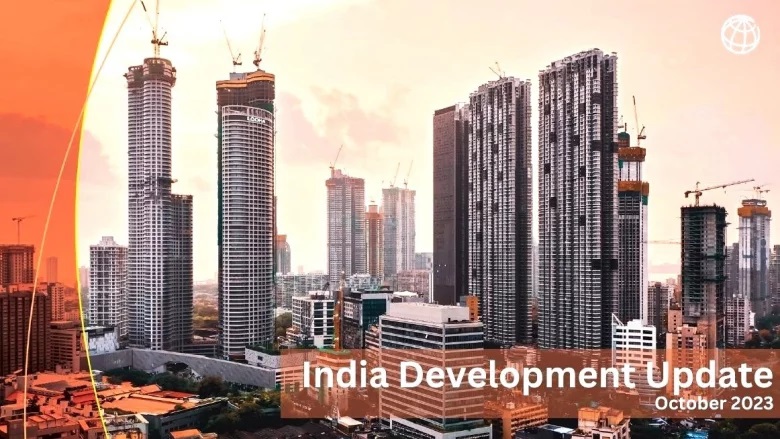India’s Growth to Remain Resilient Despite Global Challenges

NEW DELHI, October 3, 2023—India continues to show resilience against the backdrop of a challenging global environment, according to World Bank’s latest India Development Update (IDU).
The IDU, the Bank’s flagship half yearly report on the Indian economy, observes that despite significant global challenges, India was one of the fastest-growing major economies in FY22/23 at 7.2%. India’s growth rate was the second highest among G20 countries and almost twice the average for emerging market economies. This resilience was underpinned by robust domestic demand, strong public infrastructure investment and a strengthening financial sector. Bank credit growth increased to 15.8% in the first quarter of FY23/24 compared with 13.3% in the first quarter of FY22/23.
The IDU expects that global headwinds will continue to persist and intensify due to high global interest rates, geopolitical tensions, and sluggish global demand. As a result, global economic growth is also set to slow down over the medium term against a background of these combined factors.
In this context, the World Bank forecasts India’s GDP growth for FY23/24 to be at 6.3%. The expected moderation is mainly due to challenging external conditions and waning pent-up demand. However, service sector activity is expected to remain strong with growth of 7.4% and investment growth is also projected to remain robust at 8.9%.
“An adverse global environment will continue to pose challenges in the short-term,” said Auguste Tano Kouame, World Bank’s Country Director in India. “Tapping public spending that crowds in more private investments will create more favorable conditions for India to seize global opportunities in the future and thus achieve higher growth.”
Adverse weather conditions contributed to a spike in inflation in recent months. Headline inflation rose to 7.8% in July due to a surge in prices of food items like wheat and rice. Inflation is expected to decrease gradually as food prices normalize and government measures increase the supply of key commodities.
“While the spike in headline inflation may temporarily constrain consumption, we project a moderation. Overall conditions will remain conducive for private investment,” said Dhruv Sharma, Senior Economist, World Bank, and lead author of the report. “The volume of foreign direct investment is also likely to grow in India as rebalancing of the global value chain continues.”
The World Bank expects fiscal consolidation to continue in FY23/24 with the central government fiscal deficit projected to continue to decline from 6.4% to 5.9% of GDP. Public debt is expected to stabilize at 83% of GDP. On the external front, the current account deficit is expected to narrow to 1.4% of GDP, and it will be adequately financed by foreign investment flows and supported by large foreign reserves.
OUTLOOK
The India Development Update is a companion piece to the South Asia Development Update, a twice-a-year World Bank report that examines economic developments and prospects in the South Asia region and analyzes policy challenges faced by countries. The October 2023 edition titled Toward Faster, Cleaner Growth shows growth in South Asia is higher than any other developing country region in the world, but slower than its pre-pandemic pace and not fast enough to meet its development goals. The report also includes short and long-term policy recommendations for countries in the region to manage fiscal risks and accelerate growth, including by boosting private sector investment and seizing opportunities created by the global energy transition.
Photo Credit : World Bank
(This story has not been edited by News Mania staff and is published from a Media Release)






